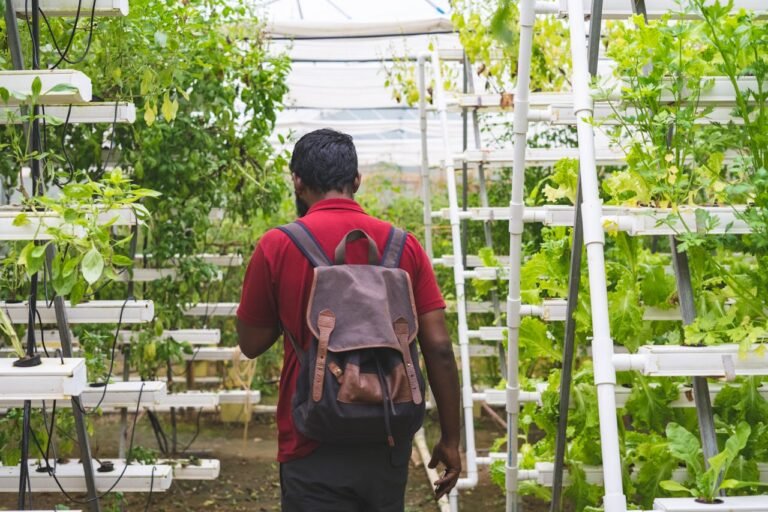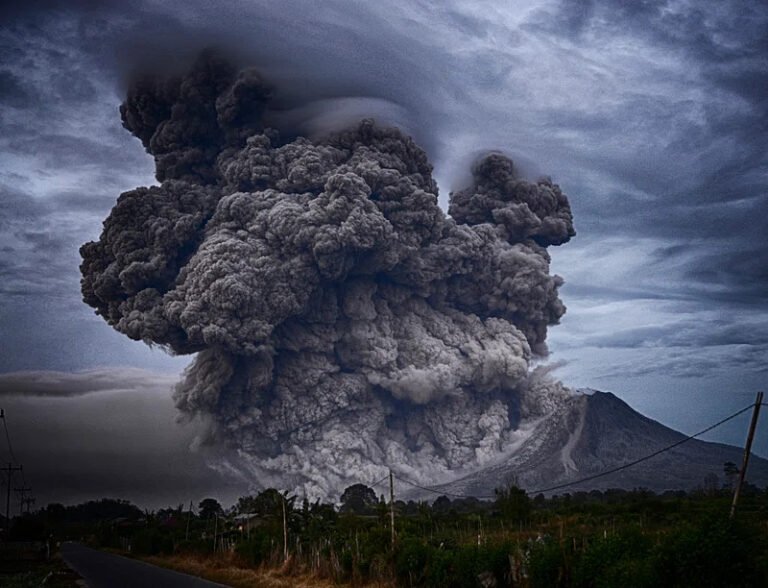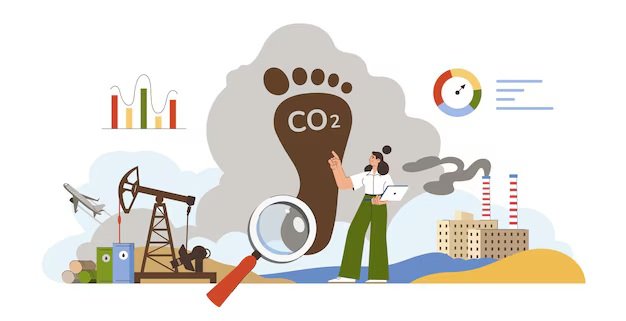10 Positive Effects of Dairy Farming on the Environment
Is dairy farming sustainable for the environment? Can dairy farmers contribute to a more sustainable future? These are important questions as the world grapples with climate change and the need to prioritise sustainable agricultural practices.
The dairy industry has developed significantly in the last century. It has become a key sector in agriculture, not only for providing protein sources but also for its role in promoting environmental sustainability. While the dairy industry has faced heavy criticism for its environmental impact, particularly in terms of greenhouse gas emissions, emerging evidence suggests that dairy farming can have positive effects on the environment when sustainable practices are prioritised.
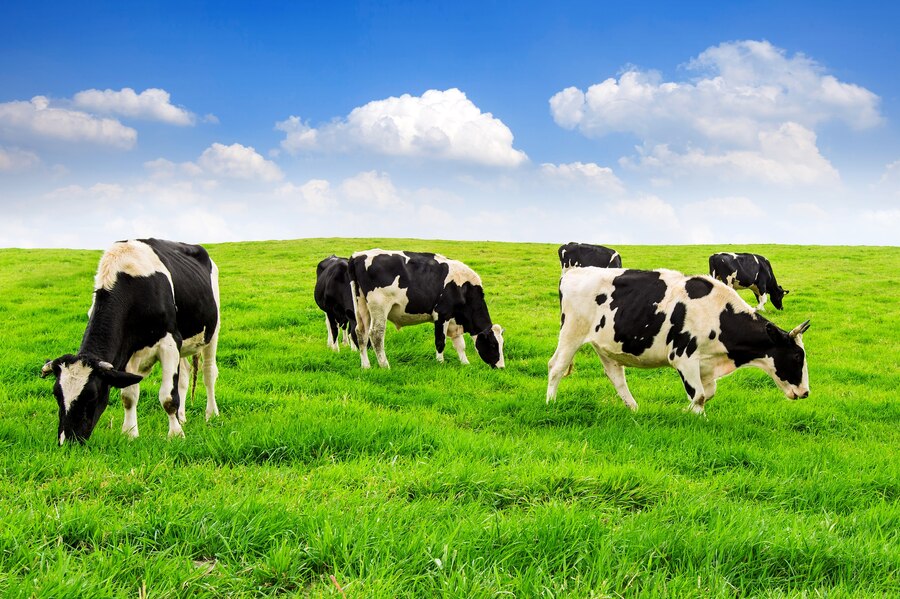
In This Article
- The Evolution of Dairy Farming
- The Environmental Impact of Dairy Farming
- Positive Effects of Dairy Farming on the Environment
- Challenges and the Path Forward
- Conclusion
The Evolution of Dairy Farming
Dairy farming has been practised for centuries, with its roots dating back to the early Neolithic era. It became popular in Europe and Africa during the 7th millennium BC. Over time, dairy farming transitioned from a small-scale manual operation to a large-scale, technologically advanced system producing large quantities of all dairy products.
Today, the thriving industry is one of the most regulated sectors in agriculture. For example, dairy farmers in the United States must follow strict environmental standards to ensure that their farming practices not only meet the demand for dairy products but also minimise the carbon footprint of the dairy industry.
The Environmental Impact of Dairy Farming
While we will be discussing the positive effects of dairy farming, it’s also important to highlight the environmental impact of the farming process. According to the American Dairy Association Northeast, the United States dairy industry contributes to about 2% of the country’s greenhouse gas emissions.
However, the industry is making efforts to minimise its carbon footprint. The industry is committed to reducing its carbon emissions and has set sustainability goals to achieve greenhouse gas emission neutrality by 2050. This is part of an initiative to make dairy farming more sustainable. But how are dairy farmers supporting the idea of a sustainable future?
Positive Effects of Dairy Farming on the Environment
If sustainability is prioritised, dairy farming can be environmentally friendly with positive effects. A sustainable dairy industry can be achieved by incorporating green innovative practices, technological advancements, and prioritising environmental sustainability.
#1. Dairy Farming Reuse Waste
One of the environmental benefits of the dairy industry is its ability to reuse waste, specifically manure. Manure is an important resource in agriculture that can be repurposed as a natural fertiliser to improve soil quality and health. The application of manure can help retain nutrients in the soil, increase organic matter, and improve the soil’s water-holding capacity. Using animal waste from dairy farms reduces the need for synthetic fertilisers, which can have negative environmental effects.
The application of manure as fertiliser supports the concept of a circular economy within agriculture. By reusing waste products from dairy farms, farmers minimise the need to rely on external inputs, thereby creating a more sustainable farming system.
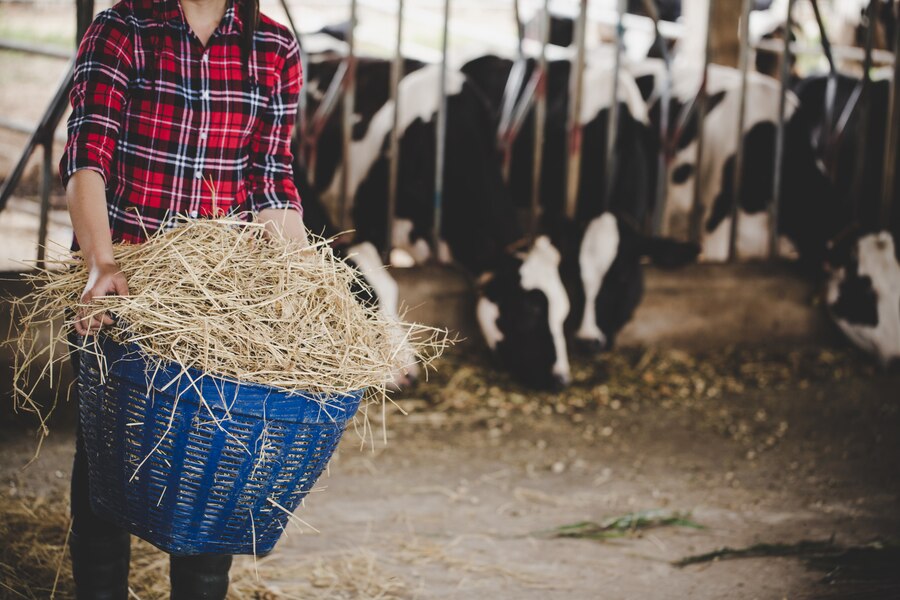
Learn More: 5 Sustainable Ranching Practices
#2. Converting Waste into Renewable Energy
Emerging high-tech dairy farms are utilising methane digesters to convert animal waste and other organic farm waste into renewable energy. Methane digesters function by capturing methane gas that would other be released into the atmosphere and converting it into electricity. This is a sustainable approach to minimise greenhouse gas emissions while generating electricity to power farms.
Converting waste into renewable energy not only reduces greenhouse gas emissions, but it also provides a renewable energy source that promotes sustainability in dairy farming. According to a report by the Environmental Protection Agency (EPA), methane digesters can help reduce methane emissions from dairy farms by 75%.
#3. Dairy Farming Helps Improve Air Quality
Air quality is one of the major concerns in agriculture, particularly in intensive farming operations where livestock are kept in close quarters. Dairy farmers have made efforts to resolve this issue through various measures designed to minimise emissions and improve air quality.
The use of air filtration systems in barns is an example of one of the measures to help reduce the concentration of airborne pollutants like ammonia and particulate matter. Air filtration systems function by capturing and neutralising toxic substances before they are released into the environment. This helps to keep the air around dairy farms clean and fresh.
Dairy farmers are also using lined and treated lagoons to store waste materials with a bad odour. These lagoons effectively reduce the release of volatile organic compounds (VOCs) into the environment, and this helps improve the air quality around the farm.
#4. Optimising Cow Diet to Reduce Emissions
Another way dairy farmers can improve air quality and minimise greenhouse gas emissions is by optimising cow diets. Research has shown that certain feed additives can help reduce the amount of methane cow produces during digestion.
A study published in the journal Translational Animal Science discovered that mixing certain types of algae into cow diets can reduce methane emissions by up to 80%. This addresses one of the most pressing issues of the dairy industry, as enteric fermentation is a major contributor to methane gas emissions.
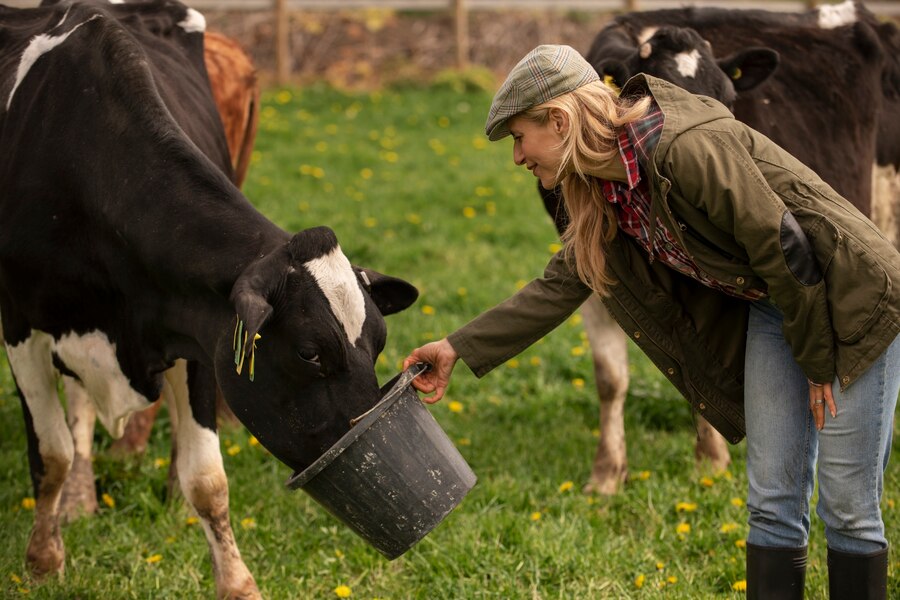
#5. Water Conservation and Reuse
Water is a valuable resource in agriculture, and dairy farms are using more of it. Dairy farmers are making efforts to reduce their water consumption and reuse water rather than wasting it, thereby conserving the resource for future generations.
One effective way dairy farmers conserve water is by using manure as fertiliser—a process that increases the soil’s ability to retain water. This reduces the need to use more water or rely on irrigation systems may not ensure efficient water use. Water conservation in dairy farming is important for preserving water resources in arid regions.
Additionally, dairy farmers are implementing water recycling systems to conserve resources. With these systems, water used in milking barns and parlours is collected, treated, and reused for cleaning walkways or irrigating fields. This not only helps to conserve water but also reduces the impact of dairy farms on local water supplies.
According to the University of California, Davis, water recycling on dairy farms can reduce water usage by almost 50%.
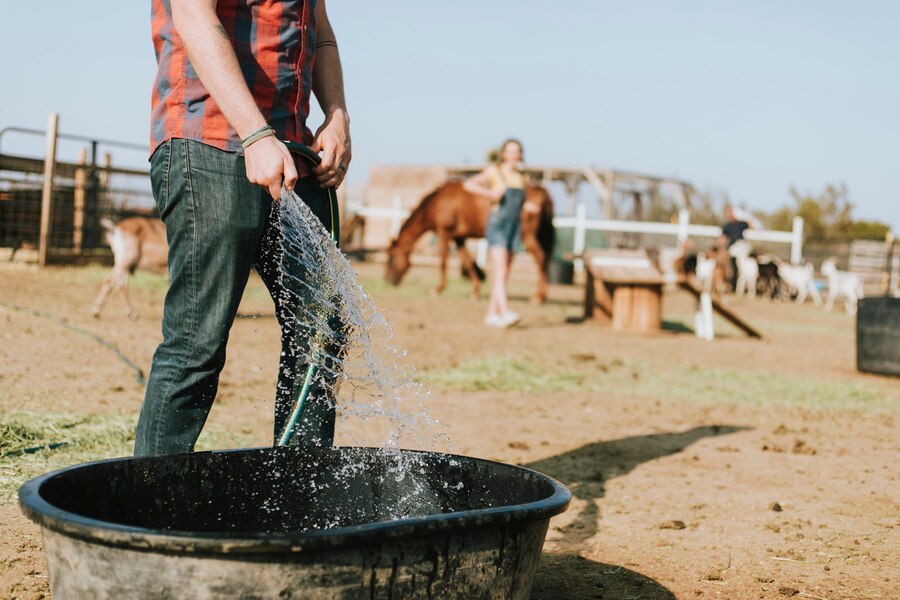
#6. Adhering to Strict Environmental Standards
The dairy industry’s commitment to adhering to strict environmental standards is one of its finest attributes. Dairy farmers in the United States must comply with strict regulations implemented by agencies like the Environmental Protection Agency (EPA) and the Natural Resources Conservation Service (NRCS). The regulations set by these agencies include everything from waste management and water conservation to air quality and animal welfare.
Dairy farmers follow these standards to ensure that their operations are environmentally friendly. Many eco-minded farmers take pride in meeting these standards and have even gone above the regulatory requirements to implement best management practices to further minimise their carbon footprint.
For example, many dairy farmers have taken the extra step to obtain special environmental permits that allow them to personally implement advanced waste management practices. These permits usually require farms to undergo regular inspections to ensure the sustainability standards of the farm’s operations are continually improved.
#7. Investment in Research and Innovation
The dairy industry recognises and understands the importance of research and how it plays a crucial role in innovation in achieving environmental sustainability. As a result, the industry prioritises research and has made significant investments to develop innovative technologies and practices to minimise the carbon footprint of dairy farming.
For example, the Dairy Research Institute, in collaboration with industry partners and educational institutions, particularly universities, is conducting extensive research on nutrient management, greenhouse gas reduction, and feed efficiency. The research has led to the identification of new methods to make dairy farming more sustainable, from improving cows’ health and productivity to developing new methods for managing manure and reducing emissions.
Many dairy farmers have taken responsibility by participating in pilot programs and field trials to test new technologies and practices on their dairy farms. This has helped in the widespread adoption of sustainable practices in the dairy industry. The emergence of new technologies discovered through research will help ensure that dairy farming remains environmentally friendly.
Learn More: Which Is a Sustainable Practice? Operating Wind Farms, Clear-Cutting, Flood Irrigation or Over Fishing
#8. Enhancing Soil Health through Sustainable Practices
Healthy soil ensures sustainable agriculture, and dairy farming is focused on improving soil health through environmentally friendly practices. According to a study, manure from dairy farms is useful in improving soil structure and fertility, and this has helped farmers to improve their crop yield, reducing their reliance on synthetic fertilisers.
One of the key practices utilised in dairy farming is non-till or reduced-till farming. This practice minimises soil disturbance and erosion, preserves soil structure, improves water filtration, and increases the soil’s ability to sequester carbon.
A study published in Agronomy Journal suggested that many dairy farmers are also utilising cover cropping and crop rotation practices to improve soil health. According to the study, cover crops like rye and clover are planted in the off-season to help prevent soil erosion and improve biodiversity and soil fertility. Crop rotation is an effective measure to break pest and disease cycles, thereby reducing the need for fertilisers and synthetic pesticides.
By implementing these practices, dairy farmers are contributing to the long-term health of the environment and improving their operations to be more sustainable.
#9. Supporting Biodiversity on Dairy Farms
Biodiversity is crucial for the health of ecosystems, and dairy farmers are making efforts to promote biodiversity on their farms. By creating a natural habitat for wildlife and promoting diverse plant species through crop rotation, dairy farmers help protect the natural environment.
For example, some dairy farmers have developed buffer strips—zones of permanent vegetation between farms and fields and waterways. These buffer strips provide natural habitat for wildlife, reduce the risk of soil erosion, and filter runoff before it reaches nearby water bodies.
In addition to buffer strips, dairy farmers are also adopting sustainable practices that support pollinators’ health with wildflowers around their farms. These wildflowers help improve the population of bees, butterflies, and other pollinators, which are essential for the reproduction of many crops and wild plants.
By implementing these sustainable practices, dairy farmers are helping to establish more resilient ecosystems.
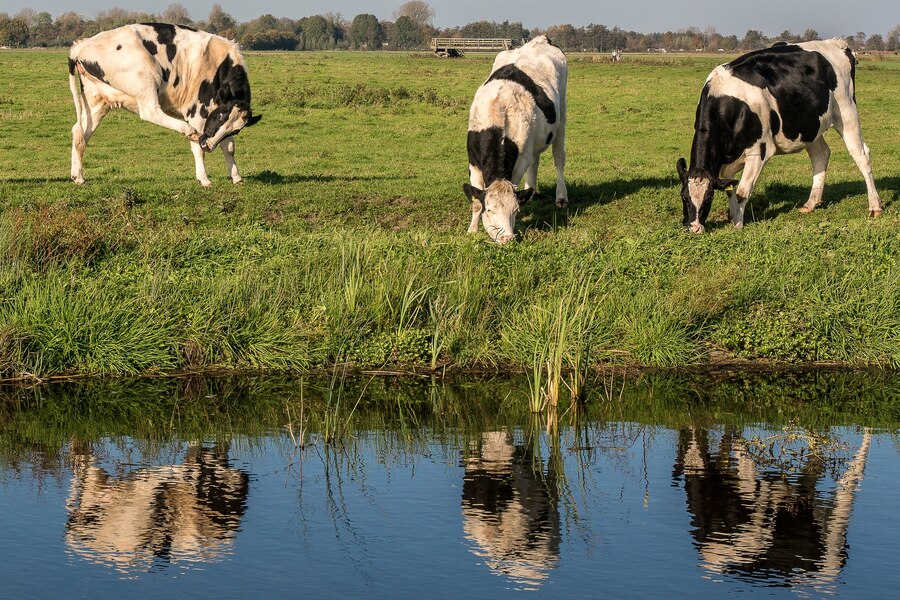
#10. Contributing to Carbon Sequestration
By implementing sustainable practices that improve soil health, dairy farmers can help remove carbon dioxide from the atmosphere and store it in the soil.
For example, farming practices such as agroforestry, non-tilling farming, and cover cropping can improve the soil’s ability to sequester carbon. Dairy farms with well-managed pastures and grasslands can retain and store large amounts of carbon in the soil, helping to minimise greenhouse gas emissions associated with dairy production.
According to the Intergovernmental Panel on Climate Change (IPCC), improved land management practices like those used by sustainable dairy farms have the potential to sequester between 2 and 5 gigatons of carbon dioxide equivalent per year by 2050.
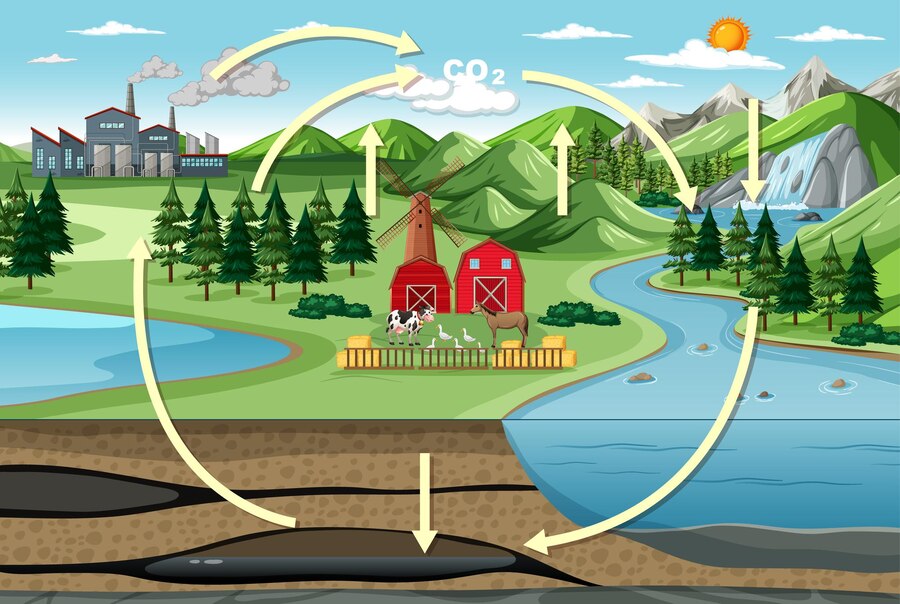
Challenges and the Path Forward
Although dairy farming can benefit the environment, it also has its challenges. Climate change, fluctuating market conditions, and the need for advanced innovations are some of the challenges in the dairy industry. However, dairy farmers have shown a genuine commitment to sustainability, with ongoing extensive research and technological advancements, offering promising prospects for a sustainable future.
The dairy industry is increasingly working to reduce its carbon footprint to promote a more sustainable future. Whether it involves converting manure into renewable energy or adopting sustainable farming practices that promote biodiversity, dairy farmers are not merely adhering to strict environmental rules—their efforts towards achieving environmental sustainability are vital in mitigating climate change and creating a resilient food system.
Conclusion
Dairy farming does have its challenges and environmental impacts, but the dairy industry is making efforts to reduce its carbon footprint and adopt sustainable practices that promote biodiversity. The industry’s commitment to sustainability, supported by ongoing extensive research and technological advancements, looks promising for a sustainable future.
As dairy farming continues to evolve, farmers have taken the responsibility to participate in pilot programs and field trials to test new technologies and practices on their dairy farms. This has facilitated the widespread adoption of sustainable practices in the dairy industry.

